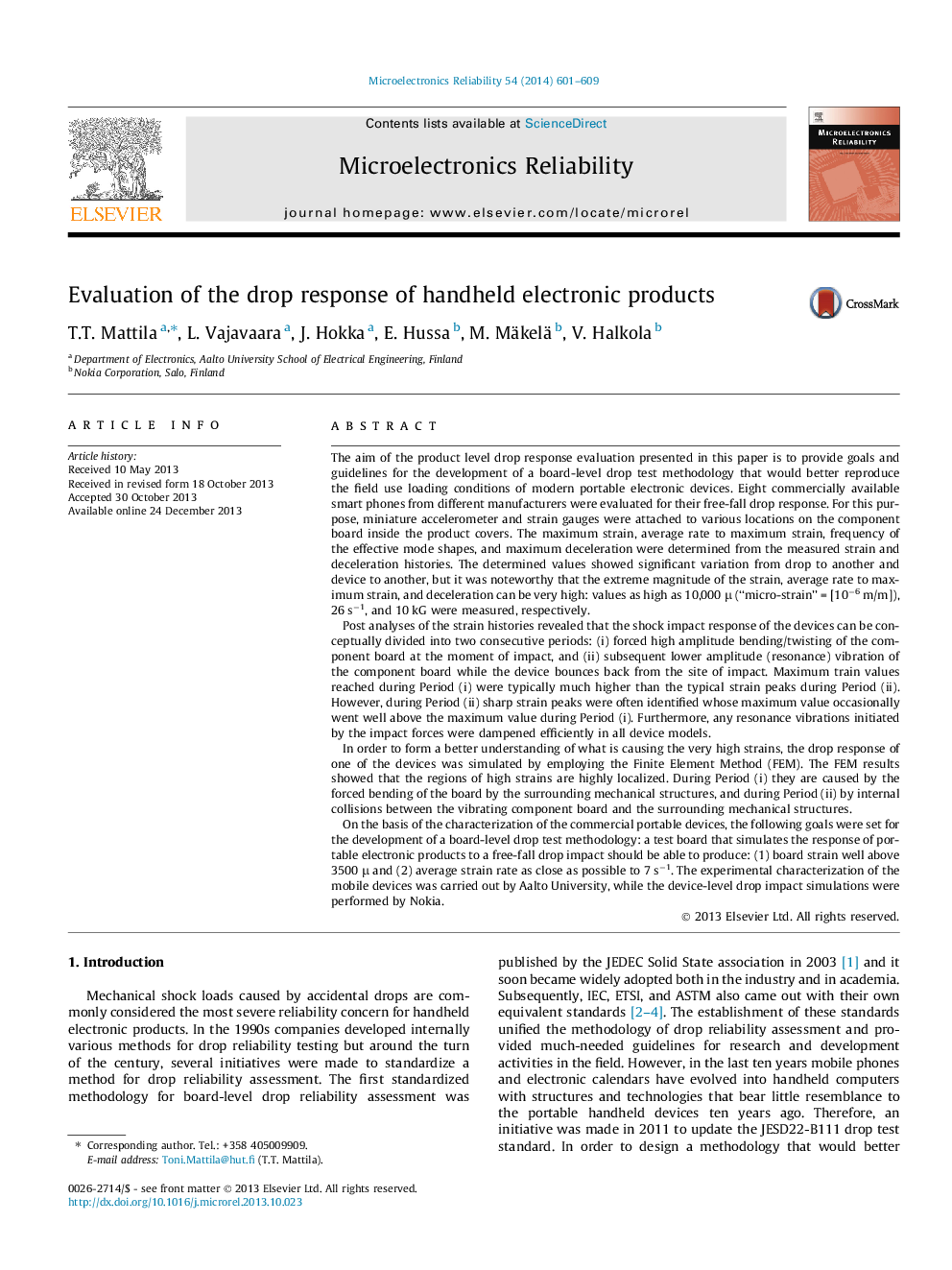| Article ID | Journal | Published Year | Pages | File Type |
|---|---|---|---|---|
| 548173 | Microelectronics Reliability | 2014 | 9 Pages |
The aim of the product level drop response evaluation presented in this paper is to provide goals and guidelines for the development of a board-level drop test methodology that would better reproduce the field use loading conditions of modern portable electronic devices. Eight commercially available smart phones from different manufacturers were evaluated for their free-fall drop response. For this purpose, miniature accelerometer and strain gauges were attached to various locations on the component board inside the product covers. The maximum strain, average rate to maximum strain, frequency of the effective mode shapes, and maximum deceleration were determined from the measured strain and deceleration histories. The determined values showed significant variation from drop to another and device to another, but it was noteworthy that the extreme magnitude of the strain, average rate to maximum strain, and deceleration can be very high: values as high as 10,000 μ (“micro-strain” = [10−6 m/m]), 26 s−1, and 10 kG were measured, respectively.Post analyses of the strain histories revealed that the shock impact response of the devices can be conceptually divided into two consecutive periods: (i) forced high amplitude bending/twisting of the component board at the moment of impact, and (ii) subsequent lower amplitude (resonance) vibration of the component board while the device bounces back from the site of impact. Maximum train values reached during Period (i) were typically much higher than the typical strain peaks during Period (ii). However, during Period (ii) sharp strain peaks were often identified whose maximum value occasionally went well above the maximum value during Period (i). Furthermore, any resonance vibrations initiated by the impact forces were dampened efficiently in all device models.In order to form a better understanding of what is causing the very high strains, the drop response of one of the devices was simulated by employing the Finite Element Method (FEM). The FEM results showed that the regions of high strains are highly localized. During Period (i) they are caused by the forced bending of the board by the surrounding mechanical structures, and during Period (ii) by internal collisions between the vibrating component board and the surrounding mechanical structures.On the basis of the characterization of the commercial portable devices, the following goals were set for the development of a board-level drop test methodology: a test board that simulates the response of portable electronic products to a free-fall drop impact should be able to produce: (1) board strain well above 3500 μ and (2) average strain rate as close as possible to 7 s−1. The experimental characterization of the mobile devices was carried out by Aalto University, while the device-level drop impact simulations were performed by Nokia.
